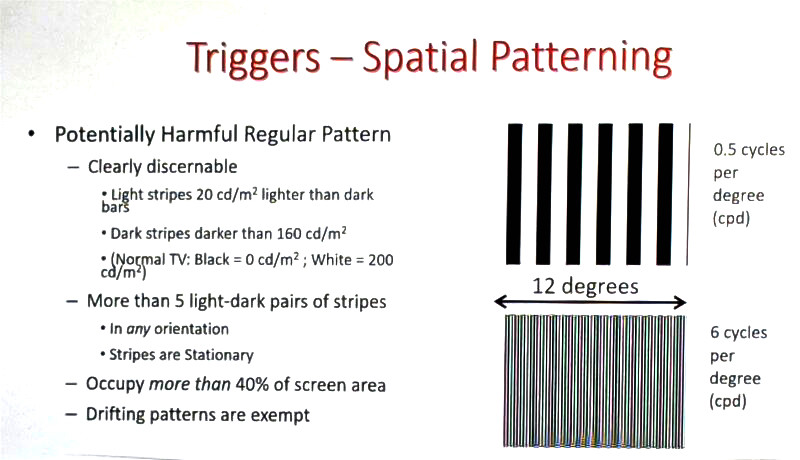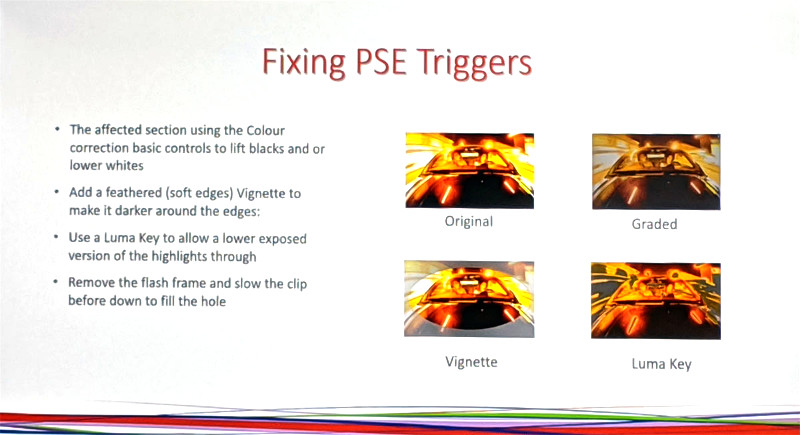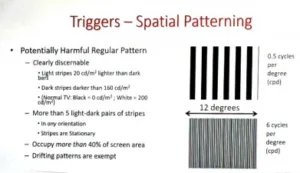At last week’s Hollywood Professional Association (HPA) Tech Retreat, the subject of high dynamic range came up more than a few times. This annual gathering of people who work in the post-production industry and other allied fields offers an eclectic range of presentations on acquisition, post, and delivery of media content, along with some unexpected detours here and there.

One presentation raised an issue I frankly hadn’t thought about with bright displays, and that is photosensitive epilepsy (PSE). Presenter John Harris of Cambridge Research Systems provided some insights. (Cambridge Research Systems makes software tools for analyzing broadcast video footage to detect PSE triggers and provides tools for correcting them.)
PSE occurs in approximately 1 out of every 4000 people, with new cases developing at a rate of 1.1 per 100,000. The incidence of PSE for the 7- to 19-year age group is 5.7 cases per 100,000, and the condition is twice as common in females as it is in males. It’s not new – PSE was observed in the late 1800s!

PSE is primarily an issue with content viewed on home televisions; in particular, TV commercials. Harris cited one example of a UK commercial with flashing graphics that resulted in nearly 700 admissions to hospitals for treatment of seizures!
According to Harris, over 60% of photosensitives experience their first seizure watching television (he detailed some prominent examples of TV programs and commercials that triggered episodes), and 75% of PSE patients remain photosensitive for life.
PSE is generally triggered by opposing changes in luminance with 20 nits of contrast or more, where the luminance of the darker image is below 160 nits and there are (a) more than three flashes per second and (b) the flashes occupy more than 25% of the screen area. Saturated red colors are particularly troublesome.

Harris detailed what he described as “potentially harmful luminance flash” in HDR video images. The conditions for triggering would be as follows:
- The absolute contrast between high and low luminance levels is 20 nits or more
- The relative Michelson contrast ratio* is 17:1 or more. For normalized light output (Y), the Michelson contrast (C) is expressed as:
C = Ymax – Ymin
Ymax + Ymin
- There are more than 3 and fewer than 65 flashes in one second
- The flashes occupy more than 25% of the screen area
Some ‘fixes’ for PSE triggers would include raising black levels or lowering white levels to reduce overall contrast, adding a feathered or soft edge vignette to reduce luminance levels around the edges of the image, reduce the luminance values of image highlights, and remove any flashing frames and reduce the speed of the preceding clip to fill the original time interval. Of course, such adjustments would alter artistic intent.

Will the adoption of high dynamic range for broadcast video create additional problems for photosensitives? Apparently, it all depends on the content…PP
* – Michelson contrast is commonly used for patterns where both bright and dark features are equivalent and take up similar fractions.

